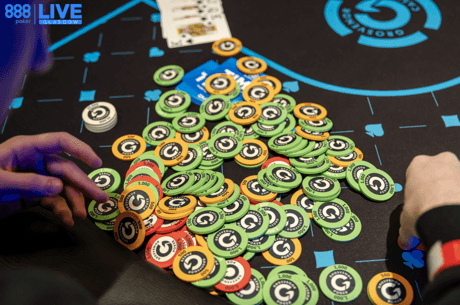Thinking About Lines Used by Pluribus the Poker Bot, Part 1

Recently, some truly groundbreaking news hit the poker wire when it was revealed a poker bot had been developed that could crush some of the top human players in six-max no-limit hold'em. Pluribus, as the AI program has been dubbed, defeated lineups including Darren Elias, Tony Gregg and Nick Petrangelo among other notable poker pros.
The news represented a significant breakthrough in artificial intelligence development, and could have huge implications on poker at multiple levels. For example, online heads-up no-limit hold'em has become essentially a dead game in the aftermath of an earlier bot, developed by the same team, demonstrating the format was machine-solved.
Does a similar fate await online six-max? Will online poker sites need to up their bot detection techniques by a few orders of magnitude in light of the revelation that Pluribus runs on about $150 worth of CPU power?
While these are valid considerations, this article will instead delve into some of the strategy demonstrated by the unusual lines taken by Pluribus in some of the hands posted to YouTube and Facebook by the AI team. All hands are played $10,000 deep at $50/$100, and all thoughts come with the caveat that I haven't been a regular in online six-max cash since Black Friday, 2011.
Hand #1: Pluribus Shoves Many Times the Pot
Hand Details
In this hand (shown above), Player 3 raised under the gun to $225 with A♠Q♠. Pluribus called in the next seat with 6♦5♦. Player 1 then called from the small blind with A♣6♣ and Player 2 in the big blind called as well with Q♥10♥.
The flop came 4♠2♦10♦ and both blinds checked. Player 3 put in a bet of $300 and Pluribus shoved all in for $9,775. Everyone folded and Pluribus dragged the $1,200 pot.
Thoughts and Possible Implications
This hand is notable not because of the action Pluribus took — raising a small continuation bet while deep-stacked after flopping a combo draw — but because of the massive sizing Pluribus used.
Starting preflop, things get going in a bit of unusual fashion right off the bat. Flat-calling 6♦5♦ against an under-the-gun open isn't really a standard play in a tough six-max lineup. I'd consider it a better hand to raise with as a bluff, although that works a little better when you're deeper-stacked. Flatting here opens the door for aggressive players to squeeze behind you, as well as to come along with cards that could dominate and stack a six-high flush or straight.
Apparently, small suited connectors can indeed be played for a profit with a call in this spot if you're good enough postflop.
After the flop, Pluribus finds a fairly strong combo draw in a multi-way pot. When the preflop opener makes a small continuation-bet of $300 into $900, Pluribus has options. It can call and play in position or it can raise as a semi-bluff.
I prefer raising as this hand has zero showdown value without improvement, and a raise is more likely to get the pot heads-up where the hero can win with a bluff or even something like a pair in some spots. I'd probably make it something like $1,400 in this spot, hoping to fold out the blinds and set up a possible triple barrel.
What Pluribus actually did — shove all in for more than eight times the pot — shocked me. How can this be optimal, I wondered?
While my simple brain, capable of only beating small-stakes cash and tournaments, can only offer conjecture, it's interesting to think about possible reasonings for this play.
First, the pot is multi-way, which represents the only scenario where 6♦5♦ can be in real trouble — e.g., someone has a strong pair or a set and another player has a dominating draw like A♦3♦. Shoving gives Pluribus the maximum chance to get heads-up or win the pot right away.
Second, perhaps Pluribus, through its millions of trials playing hands against itself, has determined that the optimal play against strong opponents is for Hero not to expose himself or herself — or itself — to tough decisions on later streets with a strong draw.
Consider what would happen, if say, Hero made it $1,400 as I posited. Many difficult scenarios can now develop.
Maybe someone in the blinds puts in a cold three-bet, maybe to something like $4,000 or all in. Either way, Pluribus has six-high and no fold equity with the possibility of being a decent underdog to a set or a strong draw.
Maybe one of the blinds cold calls and the opener calls. Hitting the draw may or may not win the pot now, and Pluribus can't confidently get stacks in.
Even if it just folds back to the opener, and he calls, unless the draw comes in on the turn, it's not going to be clear what the best play is. Pluribus could check back, but then getting paid on the river may be difficult. If Pluribus fires another barrel and is called, it sets up a river bluffing decision on another brick.
It seems clear that it can't be a mistake to play the hand this way. The only question is how the hell does one balance in this spot shoving eight times the pot? My best guess is that Pluribus has figured it simply doesn't matter. The hero picks up a $1,200 pot enough of the time that it makes up for any equity lost when called by hands that are slight favorites.
Next week, we'll continue to examine other unique lines from Pluribus and see if we can glean anything of import.










